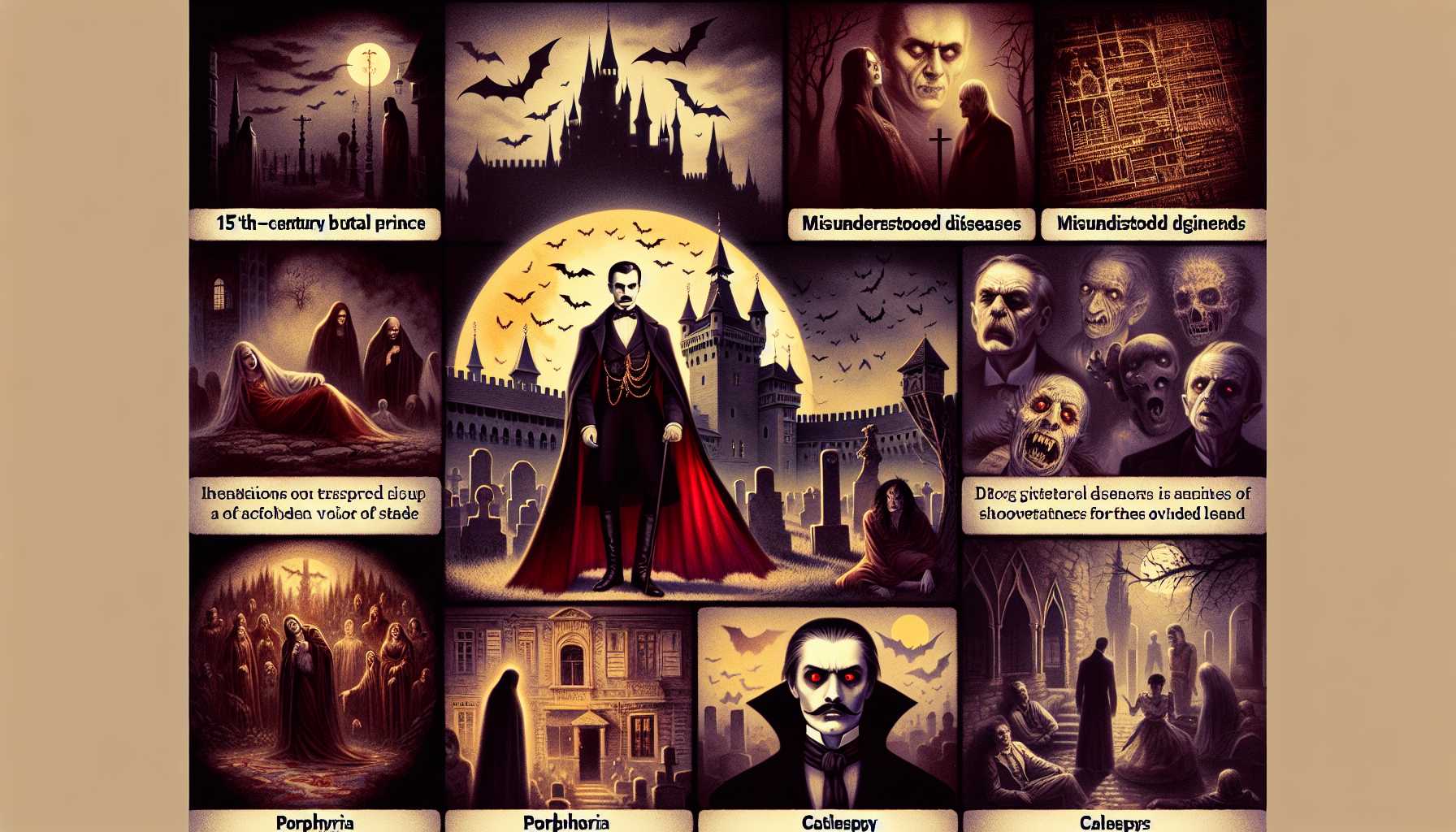
Exploring the Origins of Vampire Legends and Their Cultural Significance
The article from Discover Magazine delves into the historical and cultural roots of vampire legends, exploring how these myths may have been inspired by real-life figures and phenomena.
Disukabā Magajin no kiji wa, kyūketsuki densetsu no rekishiteki oyobi bunkateki na rūtsu o horisage, korera no shinwa ga jitsuzai no jinbutsu ya genshō ni shokuhatsusarete iru kanōsei o sagurimasu.
ディスカバー・マガジンの記事は、吸血鬼伝説の歴史的および文化的なルーツを掘り下げ、これらの神話が実在の人物や現象に触発されている可能性を探ります。
One significant influence is the life of Vlad the Impaler, a 15th-century Romanian prince known for his brutal tactics, who later became associated with the fictional character Dracula.
Jūyō na eikyō no hitotsu wa, zangyaku na senjutsu de shirareru 15 seiki no Rūmania no ōji Burado Tsepeushu no shōgai de ari, nochi ni kakū no kyarakutā Dorakyura to kanrenzukeru koto ni narimashita.
重要な影響の一つは、残虐な戦術で知られる15世紀のルーマニアの王子ヴラド・ツェペシュの生涯であり、後に架空のキャラクター・ドラキュラと関連付けられることになりました。
The article also discusses how misconceptions about diseases and natural decomposition may have fueled fears of the undead.
Mata, kiji wa byōki ya shizen no fuhai ni tsuite no gokai ga shisha e no osore o jochō shita kanōsei ni tsuite mo ronjiteimasu.
また、記事は病気や自然の腐敗についての誤解が死者への恐れを助長した可能性についても論じています。
Additionally, the phenomenon of porphyria, a type of blood disorder that can cause sensitivity to sunlight, and catalepsy, which can lead to a person appearing dead, are cited as possible contributors to the vampire mythos.
Sarani, nikkō ni taisuru kanjusei o hikiokosu ketsueki no shōgai no isshu de aru porufirin-shō to, hito ga shinde iru yō ni mieru koto ni tsunagaru kinchōbyō ga, kyūketsuki shinwa no kanōna yōin to shite in'yō sareteimasu.
さらに、日光に対する感受性を引き起こす血液の障害の一種であるポルフィリン症と、人が死んでいるように見えることにつながる緊張病が、吸血鬼神話の可能な要因として引用されています。
The eerie behaviors of corpses and the misunderstanding of certain medical conditions likely played a vital role in shaping stories of the living dead throughout history.
Shitai no bukimi na kōdō ya tokutei no igaku jōkyō ni tsuite no gokai wa, osoraku rekishi o tsūjite ikite iru shisha no monogatari o katachi zukuru ue de jūyō na yakuwari o hatashimashita.
死体の不気味な行動や特定の医学状況についての誤解は、おそらく歴史を通じて生きている死者の物語を形作る上で重要な役割を果たしました。
Overall, the article emphasizes that vampire legends are a blend of historical events, cultural fears, and a misunderstanding of science, which has allowed these myths to persist and evolve over time, capturing the imagination of people across generations.
Zentai to shite, kiji wa kyūketsuki no densetsu ga rekishiteki na dekigoto, bunkateki na osore, kagaku no gokai no kongō de aru koto o kyōchō shite ori, kore ni yori korera no shinwa wa toki o koete sonzoku shi, shinka shi tsuzuke, hitobito no sōzōryoku o sedai o koete toraeteimasu.
全体として、記事は吸血鬼の伝説が歴史的な出来事、文化的な恐れ、科学の誤解の混合であることを強調しており、これによりこれらの神話は時を超えて存続し、進化し続け、人々の想像力を世代を超えて捉えています。
Based on this article
